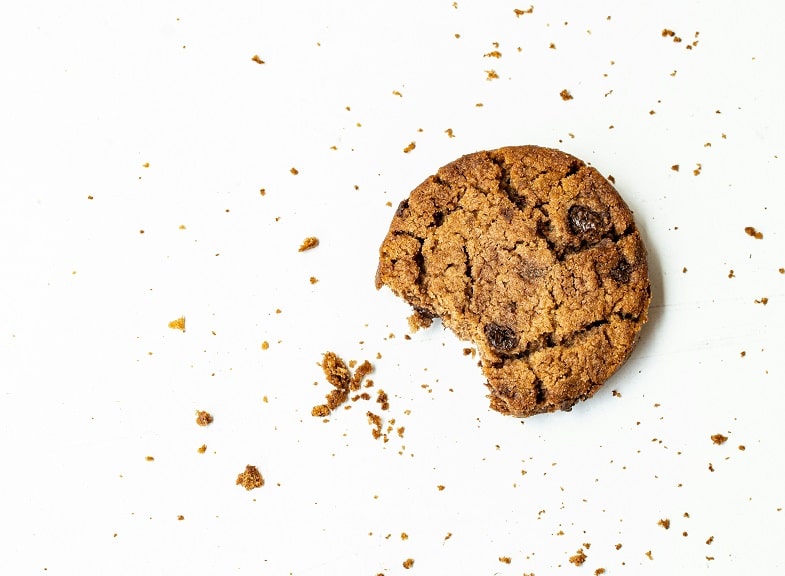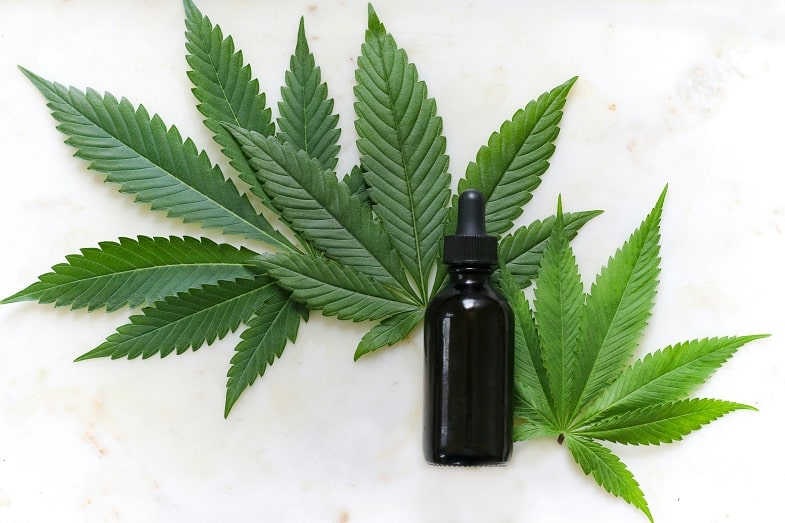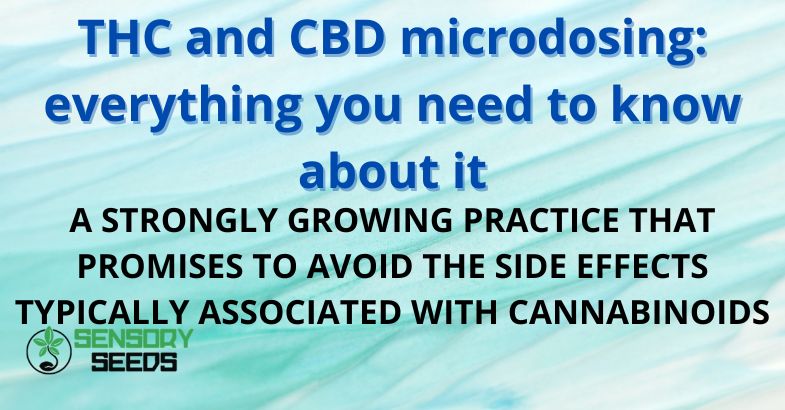Published on: 15/02/2024
A STRONGLY GROWING PRACTICE THAT PROMISES TO AVOID THE SIDE EFFECTS TYPICALLY ASSOCIATED WITH CANNABINOIDS
In the cannabis universe, an emerging practice is gaining attention for its subtle and measured approach: cannabinoid microdosing. This innovative method consists of taking small amounts of active substances derived from cannabis – mainly tetrahydrocannabinol (THC) and cannabidiol (CBD) – to exploit their therapeutic benefits without suffering the more intense psychoactive or side effects typical of higher doses.
The roots of microdosing date back to the growing interest in natural remedies and self-management of health. Although the use of cannabinoids for therapeutic purposes is a historical practice, microdosing represents a modern reinterpretation of this ancient knowledge, adapted to contemporary needs and lifestyles.
This practice is particularly relevant in the current era, where scientific research continues to reveal the enormous potential of cannabinoids in various therapeutic fields. Clinical studies, on the other hand, have begun to explore how minimal doses of THC or CBD can help relieve symptoms of anxiety, stress, sleep disorders, and chronic pain, improving the quality of life of individuals without the adverse effects of the drug. higher consumption.
Cannabinoid microdosing fits into a broader context of mindfulness and self-care and offers an option for those seeking natural, controlled, and non-invasive solutions to manage well-being. With the increasing legalization and regulation of cannabis in many parts of the world, this practice is becoming more accessible and socially accepted, paving the way for new research and applications.
It should be noted that our understanding of cannabinoid microdosing is still developing, but the excitement and interest surrounding this practice suggests a promising future, where it could become a key element in the arsenal of personal health and wellness strategies.
What are the supposed benefits of microdosing?
One of the key benefits often associated with microdosing is its potential to manage anxiety and stress by offering gentle, controlled relief. This can be especially useful in a modern world characterized by fast pace and constant pressure.
Another important benefit is pain control, especially for those suffering from chronic pain. Research has highlighted that low doses of cannabinoids can relieve pain without the risks associated with opioids or other stronger pain relievers. This represents an important alternative for those looking for more natural and less invasive solutions.
Microdosing has also been associated with better sleep quality. Cannabinoids in low doses can help regulate sleep cycles, promoting deeper, more restful rest, essential for optimal health.
Additionally, many people report an increase in creativity and concentration thanks to this practice. This effect can be especially useful for artists, writers, or professionals looking to unlock new creative perspectives or improve their work productivity.
However, it is important to note that microdosing is not a one-size-fits-all solution and its effects may vary from person to person. Research in this field is still in its early stages, but preliminary results are promising. As always, it is essential to consult a doctor or healthcare professional before beginning any new treatment practice, especially if you are taking other medications or have pre-existing health conditions.
And, furthermore, given that the majority of our readers are located in the UK, it is essential to keep in mind that in our country the consumption of cannabinoids for therapeutic purposes is strictly regulated and is only allowed with a medical prescription from a specialist and through complete products. . Full-fledged pharmaceutical products available only in pharmacies. In all other cases this practice is strictly prohibited.


Methods Typically Associated with Cannabinoid Microdosing
Cannabinoid microdosing uses several methodologies, each offering a unique way to harness the benefits of these substances in reduced doses. The choice of method, for those who are legally authorized to practice this activity, depends on personal preferences, practicality and the desired effect.
One of the most common methods is the use of edibles. These products, such as gummies, chocolates or cookies, contain precise amounts of cannabinoids, making it easy to control the dosage. Edibles offer a discreet and convenient way to microdose, the effects of which typically occur within an hour of ingestion and can last for several hours.
Tinctures are another popular microdosing option. These are liquid cannabis-based extracts that can be taken sublingually, allowing for rapid absorption and an easy-to-adjust dose. Tinctures are particularly popular for their discretion and ability to be added to foods and drinks.
Vaping is an effective option for those who prefer quick effects and precise dosage control. They are devices that heat cannabis flowers or concentrates to a temperature that releases cannabinoids without burning the plant material, reducing exposure to harmful substances typical of combustion. This method allows for precise dosing and rapid onset of effects.
Finally, topical products such as creams, lotions, and balms with cannabinoids can be applied directly to the skin. These products are ideal for localized relief, such as muscle pain or inflammation, and are a good option for those who prefer to avoid ingesting or inhaling cannabis.
Importantly, microdosing requires a thoughtful and personalized approach. Sensitivity to cannabinoids can vary significantly between individuals, so it is essential to start with very low doses and gradually increase them until you find the ideal balance.
Read also: Curiosities, myths and unexpected truths about cannabis that you absolutely need to know
Legal considerations regarding microdosing and cannabis consumption in general
When talking about microdosing cannabinoids, it is essential to take into account the legal aspects and regulation, which vary greatly from country to country and even within individual regions or states. This variability reflects the dynamic evolution of cannabis laws and the different approaches taken by governments towards its medicinal and recreational use.
In numerous countries, including some European nations and several US states, medical cannabis has been legalized, allowing the use of cannabinoid-based products to treat specific medical conditions. In these places, cannabinoid microdosing can be an accepted and regulated practice, as long as it is done in accordance with medical prescriptions and local laws.
However, in many other parts of the world, cannabis remains illegal or subject to severe restrictions. In these contexts, any form of consumption, including microdosing, can have important legal consequences. Therefore, it is essential that people are fully informed about the laws and regulations in their area of residence before considering the use of cannabinoids.
A crucial aspect to keep in mind is that, even when cannabis is legal for medicinal or recreational purposes, there are specific regulations on its distribution, sale, possession and consumption (see in this regard what we have explained above about the legislation). These laws may include restrictions on the amount of cannabis a person can possess or purchase, as well as rules on the legal age for use and areas where consumption is permitted.
Read also: Medical cannabis: a possible remedy for migraines?


In conclusion
As we near the end of this in-depth examination of cannabinoid microdosing, it is important to recognize that we are at the dawn of a new era in the understanding and application of cannabinoids for health and wellness. Microdosing, with its holistic and measured approach, offers significant potential for more conscious and responsible use of cannabis, aligning with a global trend towards more natural and personalized remedies.
The future prospects of this practice are broad and promising. As scientific research advances, we hope to discover new applications and benefits. Future studies could provide a deeper understanding of the mechanisms by which cannabinoids interact with the human body, which could pave the way for innovative therapies for a variety of conditions.
In the legal and social context, a continuous evolution of public policies and perceptions about cannabis is expected. Growing acceptance and legalization in many countries suggests that we may see broader integration of cannabinoid microdosing into everyday wellness practices, accompanied by more informed and flexible regulation.
It is important, however, to proceed with caution and awareness. The need for further research, understanding individual reactions to cannabinoids, and compliance with legal regulations remains key. Additionally, open dialogue between doctors, researchers, policymakers, and the public will be crucial to ensuring that cannabinoid microdosing is used safely and effectively.
If you liked our article and found the information you were looking for, don’t miss the opportunity to stay up to date with the world of cannabis by following the content published here on Sensoryseeds.
And there’s even more: if you are a true fan, take a look at our store where you can choose from numerous varieties of collectible marijuana seeds of the highest quality, suitable for all tastes.
Takeaways
Cannabinoid microdosing represents an innovative therapeutic approach that involves ingesting small amounts of THC and CBD to exploit their therapeutic benefits without the psychoactive side effects typical of higher doses.
This practice is associated with a number of potential therapeutic benefits, including managing anxiety, stress, chronic pain, and improving sleep quality.
Cannabinoid microdosing offers multiple modes of intake, including edibles, tinctures, vaping, and topicals, allowing people to choose the option that best suits their preferences and needs.
The legality and regulation of cannabinoid microdosing varies from country to country and even within regions or states. It is essential to know and comply with local laws before considering this practice.
Cannabinoid microdosing is a growing practice, with promising future prospects. Scientific research continues to explore new uses and benefits of cannabinoids, while evolving policies could lead to broader, regulated use of this practice for personal well-being. However, it is essential to proceed with caution, follow local laws, and consult a healthcare professional when necessary.
Questions and answers
What is cannabinoid microdosing?
Cannabinoid microdosing is an innovative method that consists of ingesting small amounts of active substances derived from cannabis, such as tetrahydrocannabinol (THC) and cannabidiol (CBD), to take advantage of their therapeutic benefits without suffering the typical psychoactive or side effects of higher doses.
What are the benefits of microdosing cannabinoids?
The benefits of microdosing cannabinoids include anxiety and stress management, relief from chronic pain, improved sleep quality, and a possible increase in creativity and concentration. However, the effects may vary from person to person.
What are the typical methods associated with microdosing cannabinoids?
Typical modalities associated with cannabinoid microdosing include the use of edibles, tinctures, vaporization, and topicals. The choice of method depends on personal preferences and the desired effect.









